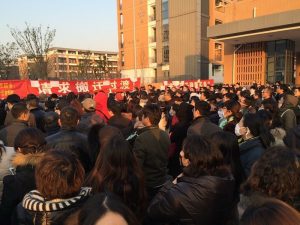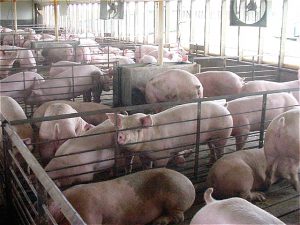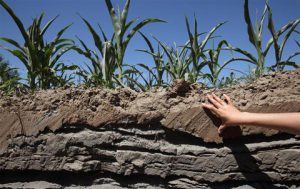On the first day after a long Chinese New Year holiday, staff from two environmental non-governmental organisations (NGOs) started careful preparations for an appeal.
Two years after the Environmental Protection Law empowered environmental NGOs to bring public interest lawsuits against polluters, they had suffered their first defeat.
The case was not a complicated one. A chemicals firm in Changzhou, a city in Jiangsu province, had relocated and the city government had taken over the land. A specialist body was employed to carry out soil remediation, but the process was flawed and pollutants had continued to spread from the site of the old chemical factory.
In early 2016, students at the nearby Changzhou Foreign Languages School noticed a strange smell; many began complaining of headaches or skin problems. A China Central Television report followed, making the incident one of the most discussed environmental issues of the year.
In April 2016, the two environmental NGOs, Friends of Nature and the China Biodiversity Conservation and Green Development Foundation, took three chemical manufacturers responsible for the pollution to court, demanding that they remove the pollution or pay for the clean-up costs.
On December 22 the case was heard in court but after eight hours a stalemate was reached and no decision was made. Lawyer for the plaintiffs, Zhao Guang, told chinadialogue that the discussion focused on who should be responsible for cleaning up historical pollution once the government has reclaimed land use rights.
A month later the Changzhou Intermediate People’s Court found against the plaintiffs, leaving responsibility for restoration of the toxic land with the government. The fact that the plaintiffs were charged 1.89 million yuan (US$270,000) in court costs also raised eyebrows. Under the Chinese legal system, the losing party must pay the court fees of the winners by-and-large.
Zhang Boju, Friends of Nature’s secretary general, told China Dialogue that many people are concerned about the cost burden on the organisation, but the more pressing task currently is to lodge an appeal: “This is far from over,” he said.
On February 7, after five days of work, the Friends of Nature legal team personally delivered their appeal documents to the court.
Historical problems
The court’s reasoning was that the companies responsible for polluting the land had already gone through a number of restructurings and mergers, meaning there was no way to calculate whom was responsible for historical pollution. It also reasoned that as the local government had already taken control of the land and carried out remediation, the responsibility of the original polluters had been transferred to the government.
The three companies responsible for the pollution – Jiangsu Changlong Chemicals, Changzhou Changyu Chemicals and Jiangsu Huada Chemicals – are old companies dating back to the 1950s, early 1980s and 1990s, respectively.
Originally located on the outskirts of the city, the companies gradually found themselves surrounded by homes and schools as Changzhou expanded. In 2010, they began to relocate, with the former site reclaimed by the local government. In order to redevelop the land as soon as possible, the government took on the responsibility of soil remediation from the polluters.
Zhang Boju admits that the history is complicated.
“The degree of responsibility is up for discussion but it should not be the case that no responsibility at all is taken,” he says.
Zhang argues that although the government took over the land, it did not purchase it and ownership did not change hands so the companies’ responsibilities have not shifted to government. Secondly, the Supreme Court has ruled that companies continue to bear the responsibilities of their predecessors after restructuring, meaning environmental responsibilities are passed on.
The 10th article of the Ministry of Environmental Protection’s “Method for Environmental Management of Polluted Land” states clearly that in these situations the responsibility for pollution remains even if land use rights end.
These points were all made in the court case.
A better law is needed
There is an urgent need in China for a better system of remediation for polluted land. A 2013 survey of soil pollution found that 16% of soil samples taken nationwide did not meet standards, in most cases due to industrial pollution.
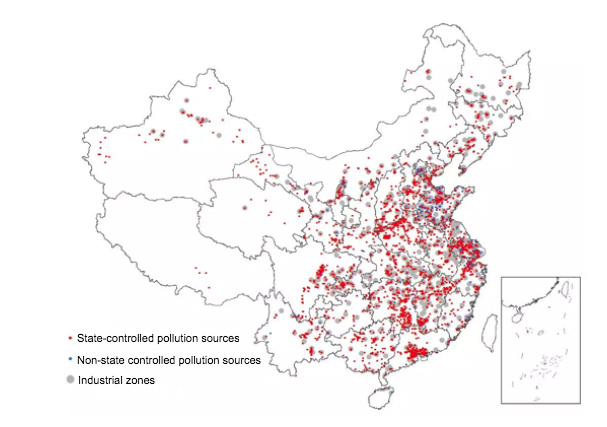
Map shows areas where there is a soil pollution risk in China, based on the identification of 4,500 companies in 13 polluting industries. This includes 3,998 state-controlled companies and 502 non-state controlled companies. (Institute for Public and Environmental Affairs)
Part of the problem stems from the rapid urbanisation of China’s cities. Chemical industry sites that were once on city outskirts are now close to residential areas. Industrial and mining firms in rural areas are also creating risks to public health. In Hunan, a major rice-growing province in south China, cases of cadmium-contaminated rice were found in 2013 that experts blamed on pollution from mining and refining of the metal.
Pollution can easily accumulate in the soil over extended periods of time, unlike air and water, soil does not move or circulate. This means that pollution created decades earlier can remain a problem. The need for the law to clearly allocate responsibility is, therefore, all the more important.
China currently has two laws or regulations that apply to soil pollution: the 2015 Environmental Protection Law, and the June 2016 Soil Pollution Action Plan. The “polluter pays” principle in the Environmental Protection Law is just that, an overarching principle with no specific rules for implementation.
The Action Plan is clearer. Responsibility is passed from the polluter to any successive land users. But that is a State Council document and so of limited power. Also, the Action Plan has nothing to say about responsibility for pollution once land is returned to state control.
This lack of clarity in the laws is why the two environmental groups took the companies to court: they wanted to set a precedent that private firms created by the restructuring of state-owned companies, or other changes, are still responsible for the historical pollution of their predecessors.
“The law seems clear – ‘responsibility should be borne when pollution causes harm’ , but this is where the lack of clarity comes from,” said Professor Lin Yanmei of Vermont Law School.
Environmental lawyer Liu Jinmei told China Dialogue that the case has a complex history, with a number of different parties potentially responsible. Deciding which is responsible and to what extent is a challenge. And with the government already involved and having taken over the contaminated land and drafting a plan for remediation, more specific laws will be needed before the responsibilities of the companies can be established.
At a November 2016 meeting, Minister for Environmental Protection Chen Jining admitted that a lack of specific laws and regulations on soil pollution was a challenge for the prevention and handling of the problem. A Soil Pollution Law is being written and a draft may be published this year. Liu Jinmei thinks this would be valuable if it clarifies the thorny issue of assigning responsibility.
Zhang Boju says that by bringing these cases, environmental groups aren’t just trying to solve particular issues, the process also provides case studies and space for discussion.
“We’ve really sensed that the door [of civil groups contributing to law making] has been more open in recent years so this issue [clarifying ambiguous aspects of the current law] is well worth the effort. Friends of Nature is putting more effort in to promote soil pollution legislation,” Zhang added.
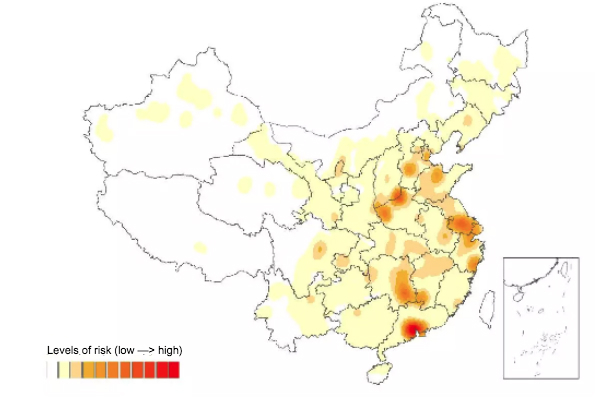
Map shows the level of risk from soil pollution in China, based on the locations of 4,500 companies in key polluting industries and over 700 industrial zones. (Institute for Public and Environmental Affairs)
A tough road ahead
Friends of Nature has submitted opinions on over 30 different laws and regulations in recent years. Many of the group’s suggestions have been adopted by bodies such as the Standing Committee of the National People’s Congress, the Ministry for Environmental Protection and the People’s Supreme Court.
But Friends of Nature and other groups have found that while it is easy to submit opinions, bringing public interest lawsuits remains difficult because of high court fees.
If the two environmental groups are required to pay court fees, it will wait until their appeal has been heard. But having lost the first hearing they have to give serious thought as to how they might pay the costs. Friends of Nature’s appeal asks for public interest lawsuits to be treated as a non-property dispute, which would limit court fees to 50 to 100 yuan (US$7-15).
When compensation is requested, court fees are set as a percentage of that sum, to be paid by the loser. A soil remediation firm employed by the Changzhou government estimated restoration of the site would cost 370 million yuan. The court fees were set at 0.5% of that – 1.89 million yuan.
Ma Yong, secretary general of the China Biodiversity Conservation and Green Development Foundation, told China Dialogue that the fees have not been finalised. Meanwhile, the organisation is involved in a number of other lawsuits and has set up a crowd-funded “Environmental Lawsuit Support Fund”, asking people to donate two yuan (30 cents) to be used for this and other cases. Almost 50,000 yuan (US$7,250) has been raised so far.
Alongside court fees, significant expenses are also incurred in gathering and presenting evidence. The cases are complex and lawyers’ fees easily reach hundreds of thousands of yuan.
China’s first public interest lawsuit over air pollution is an example. Prior to the case being heard, the plaintiff, the All-China Environmental Federation, had already spent 700,000 yuan (US$102,000) on lawyers and transport. This was more than the entire annual budget of some small environmental groups.
High costs mean that most grassroots organisations are locked out. Zhang Boju explained that since the new Environmental Protection Law came into effect only 20 of the 700 organisations with standing to bring such cases had done so.
Prior to this case the highest amount of compensation requested was 160 million yuan (US$42 million), in a water pollution case. That was won by the plaintiff, the Jiangsu Taizhou Environmental Federation, with the 970,000 yuan (US$141,000) in court fees borne by the six companies involved. The media referred to the “astronomical” sums involved, and other environmental groups were encouraged to take on high-value cases.
The sums in the Changzhou case are more than double and the outcome of the appeal will have a huge impact on how environmental groups approach serious cases of pollution. The more damage is done, the more costly and risky the lawsuit. This means that the cost burden environmental groups face in bringing such cases is as important as the soil pollution itself.
